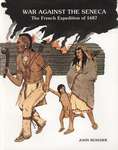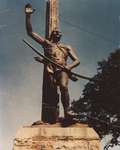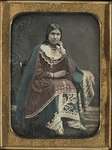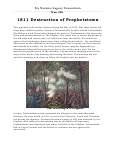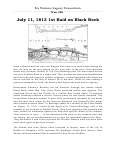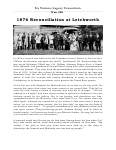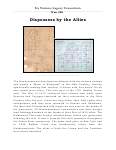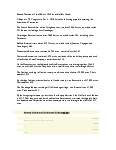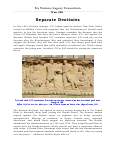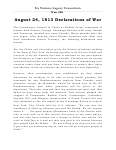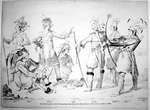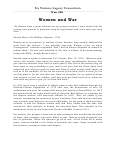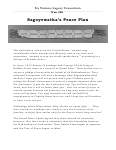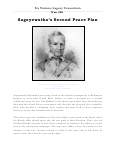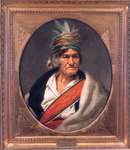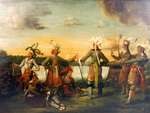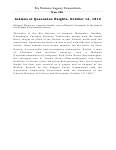Results
- If you wish to view this book, please contact the SNPL in regards to item SNPL004211v00dIf you wish to view this book, please contact the SNPL in …
- Postcard depicting the Chief Montour Monument in Painted Post, New York (Near Corning NY).Postcard depicting the Chief Montour Monument in Painted Post, New York (Near …
- Photograph of Caroline Parker of the Tonawanda NationPhotograph of Caroline Parker of the Tonawanda Nation
- Seventh in a 62 part series, 1811 Destruction of Prophetstown describes the differing perspectives of two influential Six Nations prophets Lalawethika (He Makes a Loud Noise) the brother of TehcumtheSeventh in a 62 part series, 1811 Destruction of Prophetstown describes the …
- Forty-Third in a 62 part series, July 11, 1813 1st Raid on Black Rock describe the raid by British soldiers of Black Rock on July 11th, 1813Forty-Third in a 62 part series, July 11, 1813 1st Raid on …
- Thirty-First in a 62 part series, 1876 Reconciliation at Letchworth describes the historic 1876 council meeting in which leaders from the Mohawk and Seneca Nations attempted to repatriateThirty-First in a 62 part series, 1876 Reconciliation at Letchworth describes the …
- Fifty-Third in a 62 part series, Dispossess by the Allies describes the displacement of Seneca and Cayuga Nation populations from Ohio.Fifty-Third in a 62 part series, Dispossess by the Allies describes the …
- List of Seneca veterans of the War of 1812. Researched and compiled by the Six Nations Legacy Consortium.List of Seneca veterans of the War of 1812. Researched and compiled …
- Forty-Second in a 62 part series, Separate Destinies describes U.S. Indian agent Erastus Granger’s appeal to the Senecas and Haudenosaunee (Iroquois Confederacy) to join the War of 1812 as military aForty-Second in a 62 part series, Separate Destinies describes U.S. Indian agent …
- Thirty-Ninth in a 62 part series, August 24, 1813 Declarations of War describes the declaration of War made against the Provinces of Upper and Lower Canada by The Confederacy Council of Chiefs at BufThirty-Ninth in a 62 part series, August 24, 1813 Declarations of War …
- Paper lithograph; "The North American Indian Warriors, from Lake Erie, of the Seneca, who were in London in 1818". "Beaver, I like her, Two Guns, Steep Back, Black Squirrel, Long Horns and Little BeaPaper lithograph; "The North American Indian Warriors, from Lake Erie, of the …
- Sixty-Second in a 62 part series, Women and War describes how women often suffered the most from the violence of the War of 1812.Sixty-Second in a 62 part series, Women and War describes how women …
- Fifth in a 62 part series, Sagoyewatha’s Peace Plan describes the only time in history where the Iroquois Confederacy and the Covenant Chain is broken as Seneca’s side with the United States and theFifth in a 62 part series, Sagoyewatha’s Peace Plan describes the only …
- Forty-Eighth in a 62 part series, Sagoyewatha’s Second Peace Plan describes Red Jacket’s proposal to Buffalo Creek chiefs to withdraw from The War of 1812Forty-Eighth in a 62 part series, Sagoyewatha’s Second Peace Plan describes Red …
- Image of Painting (oil on canvas) of Tommy Jemmy (Soo-non-gize, or Long Horns)a Seneca Chief. Noted for killing a Seneca Woman (Kau-qua-tau) for witchcraft and the large court proceeding and trial thImage of Painting (oil on canvas) of Tommy Jemmy (Soo-non-gize, or Long …
- Oil painting depicting a group of seven Seneca warriors in repose, standing and seated, overlooking the Niagara Gorge and FallsOil painting depicting a group of seven Seneca warriors in repose, standing …
- Source: Onondaga NationSource: Onondaga Nation
- Wampum belt giver to the Chiefs at Grand River to support a plea for neutrality in 1812. In June of 1812, Seneca, Onondaga and Cayuga Chiefs living at Buffalo Creek came to a council at Grand River.Wampum belt giver to the Chiefs at Grand River to support a …
- Forty-Sixth in a 62 part series, Indians at Queenston Heights, October 13, 1812 lists the text which can be found inscribed on a memorial to the historic 1812 Battle of Queenston Heights. The memoriaForty-Sixth in a 62 part series, Indians at Queenston Heights, October 13, …
- Beaver, George, Brantford Expositor, 1989 "People have asked me the difference between Indian nation, Indian tribe and Indian band. I would like to briefly explain these and other similar terms as they pertain to Indians, or more properly, tBeaver, George, Brantford Expositor, 1989 "People have asked me the difference between Indian nation, Indian tribe and …
For more information on contributing data, please contact us at info@snpl.ca or 519-445-2954






